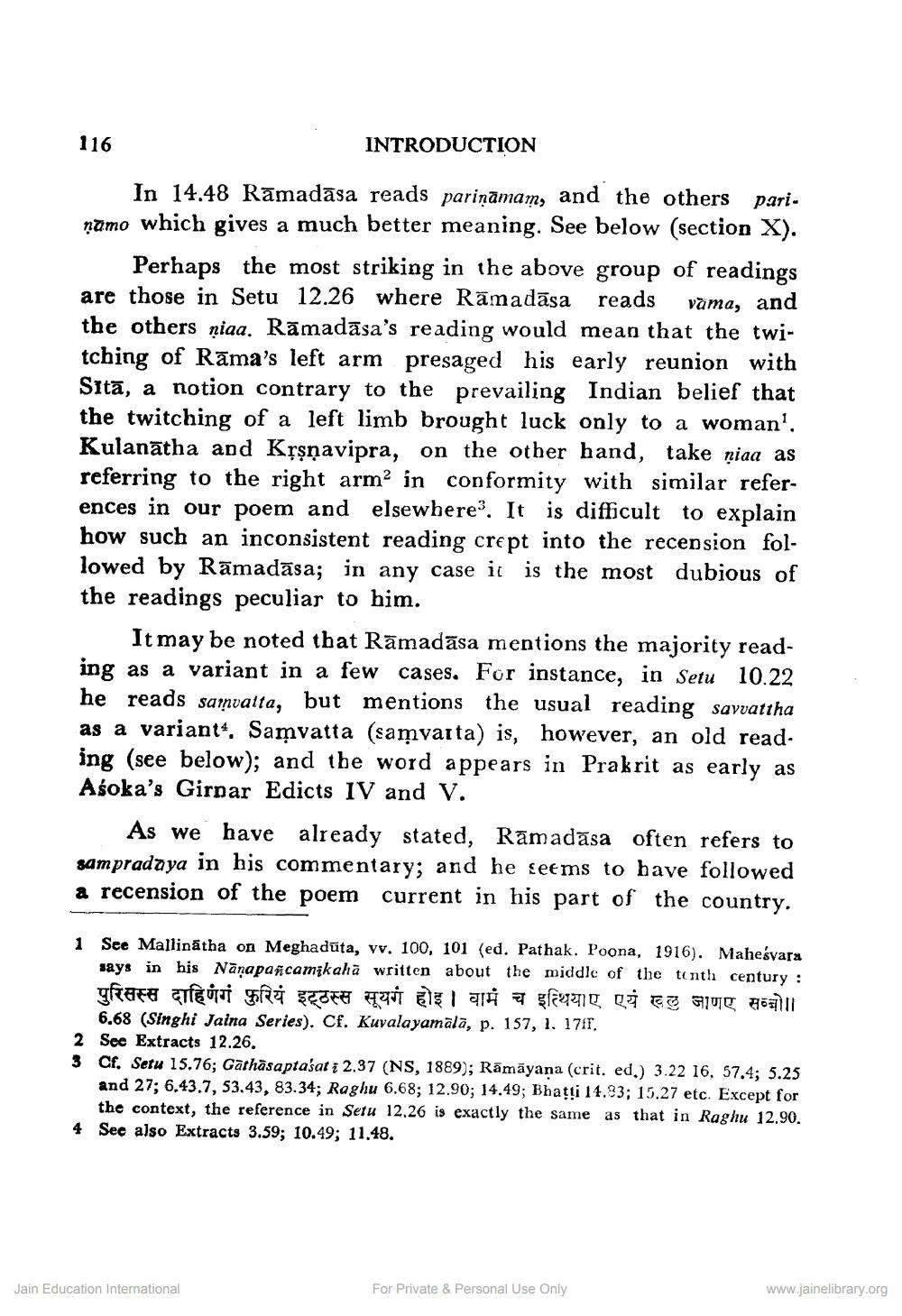________________
116
INTRODUCTION
In 14.48 Rāmadāsa reads pariņāmam, and the others pari. namo which gives a much better meaning. See below (section X).
Perhaps the most striking in the above group of readings are those in Setu 12.26 where Rāmadāsa reads vama, and the others niaa. Rāmadāsa's reading would mean that the twitching of Rāma's left arm presaged his early reunion with Sitā, a notion contrary to the prevailing Indian belief that the twitching of a left limb brought luck only to a woman'. Kulanātha and Kệşņavipra, on the other hand, take niaa as referring to the right arm? in conformity with similar references in our poem and elsewhere?. It is difficult to explain how such an inconsistent reading crept into the recension followed by Rāmadāsa; in any case it is the most dubious of the readings peculiar to him.
It may be noted that Rāmadāsa mentions the majority reading as a variant in a few cases. For instance, in Setu 10.22 he reads samvatta, but mentions the usual reading savvattha as a variant*, Samvatta (samvarta) is, however, an old read. ing (see below); and the word appears in Prakrit as early as Asoka’s Girpar Edicts IV and V.
As we have already stated, Ramadāsa often refers to sampradaya in his commentary; and he seems to have followed a recension of the poem current in his part of the country.
1 See Mallinātha on Meghadūta, vv. 100, 101 (ed. Pathak. Poona, 1916). Maheśvara
says in his Nānapancamakahā written about the middle of the tenth century : पुरिसस्स दाहिणंगं फुरियं इट्ठस्स सूर्यग होइ । वामं च इत्थियाए एयं खलु जाणए सब्बो।। 6.68 (Singhi Jaina Series). Cf. Kuvalayamālā, p. 157, 1. 1717.
See Extracts 12.26. 3 Cf. Setu 15.76; Gathāsaptasat i 2.37 (NS, 1889); Rāmāyana (crit. ed.) 3.22 16, 57.4; 5.25
and 27; 6.43.7, 53.43, 83.34; Raghu 6.68; 12.90; 14.49; Bhatti 14.93; 15.27 etc. Except for
the context, the reference in Setu 12.26 is exactly the same as that in Raghu 12.90. 4 See also Extracts 3.59; 10.49; 11.48.
Jain Education International
For Private & Personal Use Only
www.jainelibrary.org




